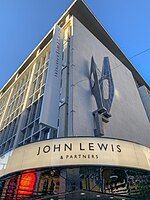Victoria Square, London

Victoria Square is a small, rectangular garden square 50 metres south of the remaining stables of The Royal Mews (on the large green block taken up by Buckingham Palace) and 150 metres north of Victoria bus station (which stands in front of Victoria Station (London)). It has a statue of the young Queen Victoria. It separated by the main wing of the Goring Hotel from an almost identical-size space between buildings, as private gardens for the hotel, backed by one road, instead of its four private close-style roads with parking and sets of pavements. Most of the Victoria and Belgravia area is the Duke of Westminster's Grosvenor Estate as to minor, overarching legal interests, the more valuable freehold of let shops and as to open spaces; this square is such an instance, which has a lasting influence on local planning policy and which has had some loss of interest by outright sales, some of which facilitated by leasehold reform under the Leasehold Reform Act 1967.
Excerpt from the Wikipedia article Victoria Square, London (License: CC BY-SA 3.0, Authors, Images).Victoria Square, London
Victoria Square, City of Westminster Victoria
Geographical coordinates (GPS) Address Nearby Places Show on map
Geographical coordinates (GPS)
| Latitude | Longitude |
|---|---|
| N 51.497777777778 ° | E -0.145 ° |
Address
Victoria Square
Victoria Square
City of Westminster, Victoria
England, United Kingdom
Open on Google Maps










